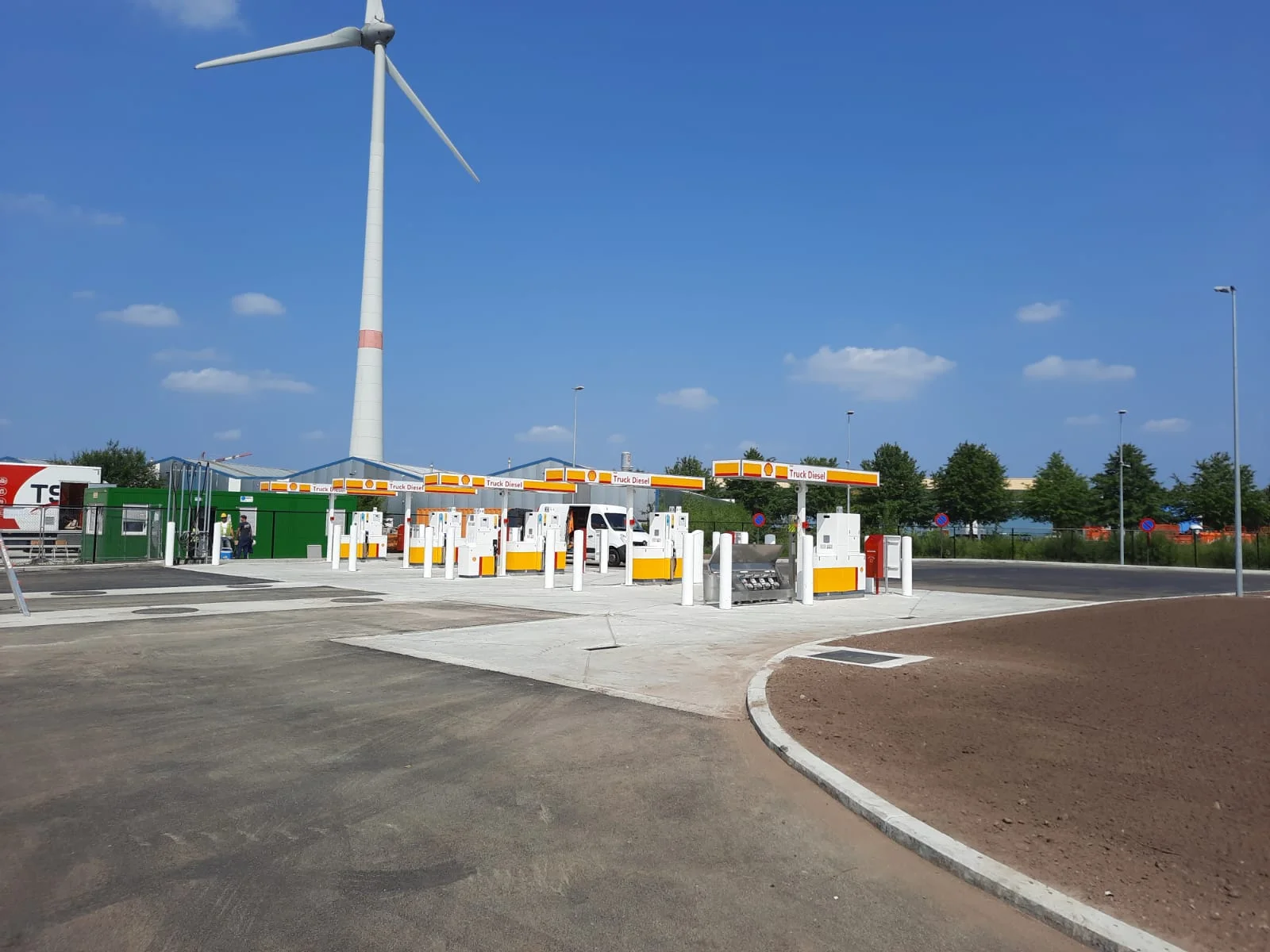Mobility Hubs
The energy transition is in full swing, and our mobility is changing along with it. The concept of a "gas station" belongs to the past: providing a complete experience with various types of fuel, charging stations, car wash facilities, and shops is the future. This also includes energy and fuel for humans, such as dining and beverage establishments like Burger King and Starbucks. The construction of such facilities is a complex task that requires the convergence of many different disciplines within a short timeframe. WeGroSan/hmvt is a reliable and experienced partner for the realization of new mobility hubs and the transformation of outdated gas stations to make them suitable for the future.
Sections

Efficient realization of multifunctional mobility hubs
The realization of a multifunctional mobility hub involves various aspects. In addition to constructing the different buildings and canopies, the installation of pipelines, fuel tanks, and liquid-tight floors requires a high level of precision. The infrastructure of the future is also an integral part of the ideal mobility hub, including hydrogen tanks, solar panels, and state-of-the-art charging stations, among others.
At WeGroSan/hmvt, all these areas of expertise are housed under one roof. This means having a single partner who works quickly and efficiently, communicates clearly, and takes care of the project from start to finish. Throughout the entire process, safety, sustainability, and the protection of local flora, fauna, and soil are important considerations.
Discover our mobility hub solutions!
At WeGroSan/hmvt, all these areas of expertise are housed under one roof. This means having a single partner who works quickly and efficiently, communicates clearly, and takes care of the project from start to finish. Throughout the entire process, safety, sustainability, and the protection of local flora, fauna, and soil are important considerations.
WeGroSan/hmvt specializes in:
- Design development and obtaining necessary permits.
- Soil investigation and remediation.
- Demolition of existing structures if required.
- Installation of pipelines, electrical systems, and sewage.
- Construction of buildings and canopies.
- Installation of fuel tanks, charging stations, hydrogen tanks, and solar panels.
- Installation of liquid-tight floors.
- Preparation for use.


.png?resolution=0x116&quality=95&isLogo=1&background=FFFFFF7F)
